#walter reuther
Note
add on to the fact the reason the us never adopted a national healthcare system was because Truman's attempt got gutted because idiots called it socialism
Yes, and to add to the point about the evolution of healthcare in America, unions knew damn well that private health insurance was a bad idea (not least because they knew that employer-based health insurance discouraged striking). Not only did they try to set up union-controlled health cooperatives in the late 40s before being kneecapped by the IRS Congress, but also Walter Reuther made one of his main goals in his 1949 campaign forcing the Big Three into backing Truman’s universal health care bill - private health insurance, supplemental UI, and retirement pensions was his consolation prize.
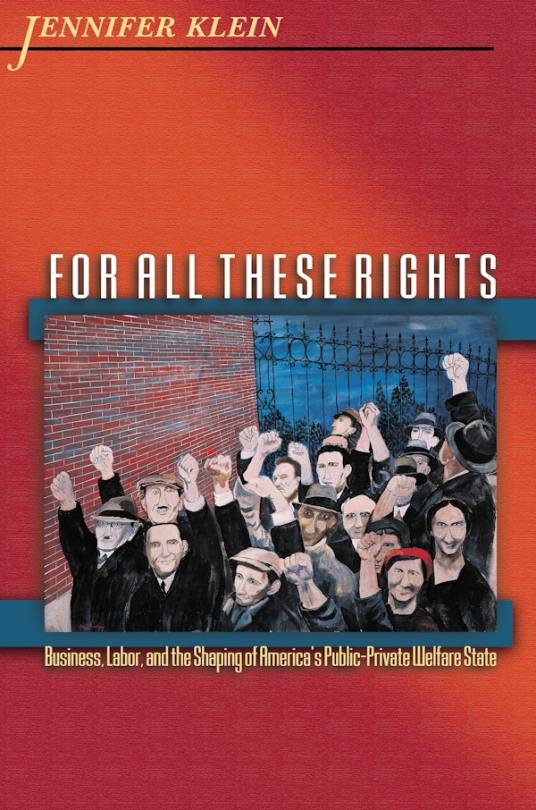
16 notes
·
View notes
Text
What is Justice? A Short Discussion of a Complicated Question
"The world progresses, in the slow and halting manner in which it does progress, only in proportion to the moral energy exerted by the men and women living in it."
-Jane Addams (Nobel Peace Prize Winner, 1930)

According to the Stanford Encyclopedia of Philosophy, “justice can take a number of different forms, depending on the practical context in which it is being applied." Anecdotally, one of the most common occurrences of world justice is in terms of laws and the judicial system, but it also arises throughout discussions of politics, theology, and ethics. In the context of law, this can be seen as establishing statutes that hold people accountable for actions that harm others. In the context of politics, this can be seen in terms like social justice which refer to creating a society of equal opportunity and availability of resources. In terms of philosophy and ethics, this idea of justice could be seen as the moral responsibility to treat people fairly and to not practice discrimination. Although the term justice can be referred to in a different manner throughout each of these contexts, the main ideas that seem to hold true through all of them is that justice means establishing a basis of equality, and impartiality, between people so they have a fair chance of flourishing without the restriction of someone or something else. While it may be difficult to pinpoint an exact definition of the term, it remains even harder to pinpoint a way in which someone can cultivate it. Though this is true, we have often pointed to Aristotle’s notion of the need of role models as the way, and possibly only way, to cultivate virtues like justice in the self. Historical figures of virtue allow for virtues like justice to change from an abstract term to one of tangible character traits and actions.

One of the historical figures that may be used to model the virtue of justice is Walter Reuther. Framing justice through the lens of social justice and creating a society of equality and fairness shows the need of a historical figure who fought for fairness and equality throughout even the most difficult of challenges. Walter Ruther was one of the leaders to organize the newly formed United Auto Workers Union in Detroit between 1936 and 1937. As he was elected in the UAW’s executive board, he represented around 30,000 auto workers and was a key leader in the 1937 sit-down strikes in Flint, Michigan to convince General Motors to raise wages to sustainable levels and to officially recognize the union. He then tried to unionize Ford’s River Rouge plant in Dearborn, Michigan, but when he, and other UAW organizers, were handing out pamphlets outside the building Ford sent a group of men to beat Reuther and the other organizers. Though he nearly died in the incident, Reuther did not stop fighting for workers' rights. By 1948, he bargained with GM to agree to bring wages up to the price of living, establish grievance procedures for workers, enforce safely standards, and even grant workers up to 95% of their salary in the case that they were laid off, pioneering the way for many modern worker’s rights. In 1963, Reuther stood by Martin Luther King Jr. throughout his speech during the March on Washington, marched with King and John Lewis from Selma to Montgomery, and even sat on the National Advisory Board for the NAACP. Later on, he also supported Cesar Chavez and the United Farmworkers Union. Reuther fought for social justice and reforms for countless types of people in order to establish the virtue of justice in society.
Both Galtung and Maslow depict the need for safety and physiological needs in order to promote wellbeing. Reuther’s example shows how the virtue of justice is important to making sure these needs are met. Reuther fought for justice in order for laborers to have safe working conditions and fair wages. Without these, there is no way for an individual to flourish let alone survive. Without the virtue of justice, people are left on both a literal and figurative starvation diet to satisfy their needs. They do not have access to fairness and equality that gives them Maslow’s foundation to start their journey towards flourishing. Justice provides an individual with the common ground to healthily satisfy their basic needs so they can work on establishing true well-being. Furthermore, practicing the virtue of justice in the self may be a way for people to develop Seligman’s ideas of positive emotions, engagement, and positive relationships as practicing justice means viewing others as equals. In turn, this gives people the humility to create relationships and foster engagement since they have this equal view.
The decision on where to “enter the forest” on the topic of justice is a very complicated one. As today’s modern definition of justice may fall into one dictated by the sense of law (whether divine or political) it may be helpful to enter the forest with Plato’s Republic where he defines a more intrinsic version of justice outside of external laws. If looking through the lens of social justice, as I chose to do with the Reuther example, it may be helpful to enter the forest in a time of great change to social justice and equality. Whether this be with labor reforms, the suffrage movements, the civil rights movement or another time of advancements towards equality, one could choose to enter the forest during a time of little justice and work their way through the efforts of people who embark on the slow but virtuous path towards achieving it.
2 notes
·
View notes
Text

White House Meeting with civil rights leaders, June 22, 1963.
Collection JFK-WHP: White House Photographs
Series: Abbie Rowe White House Photographs
File Unit: White House Photograph Collection: Abbie Rowe White House Photographs: AR7993B
Image description: About 24 people standing outside the White House. Most of them are men in suits but there is one woman, who is wearing a summer hat. A few people have been identified: Front Row: Martin Luther King, Jr., Robert F. Kennedy, Roy Wilkins, Lyndon Baines Johnson, Walter P. Reuther, Whitney M. Young, A. Philip Randolph. Second Row Second From Left: Rosa Gragg. Top Row Third From Left: James Farmer.
#archivesgov#June 22#1963#1960s#civil rights#Martin Luther King Jr.#Robert F. Kennedy#Roy Wilkins#LBJ#Walter P. Reuther#Whitney M. Young#A. Philip Randolph#Rosa Gragg#James Farmer
52 notes
·
View notes
Text
Map: Flight Obstruction Area Detroit City Airport 1968
The “flight obstruction area” comprises all areas of land or water below the airport referenced imaginary surfaces for each airport. Since its beginning, the Detroit City Airport has continued to gobble up residential space in the name of development, but also safety. In the recent budget presentations, the City Airport Director said they condemned 35 additional residential properties.
The…

View On WordPress
#1968#air traffic#airport#Detroit#Detroit City Airport#flight#geography#map#NFL Draft#obstruction#Walter P. Reuther Library#Wayne State University
0 notes
Text
Posted on August 26, 2022 by Jean-Carl Elliott and Susan Fabrich
The text below is transcribed from a hand-written document by Susan Fabrich that I came across while digging through some IWW boxes at the Walter Reuther Archives in Detroit. I wanted to make sure that it was published so that it could be better circulated, but also because I think it’s a great example of what honest reflection on organizing can look like. Too often we mimic capitalist journalism in our writing and in doing so we feel the need to leave out our mistakes while sensationalizing our wins. Focusing on only publishing “historic” and “first ever” victories erases hard-won lessons that also come through struggle and failures. Insights from these less glamorous stories can provide us with wisdom that can strengthen our organizing and cultivate important institutional learning.
I like this piece because it articulates barriers that the organizers faced and the author makes an attempt to prescribe why things didn’t play out as they had hoped. Many of the challenges they came across are still challenges for organizers today. I think that if we try to incorporate more of this sort of introspection in our strategies, it might help us address and overcome some of those obstacles. There have been some slight formatting edits for readability, but otherwise the text below appears as it was written by the original author. I have also included some of my own insights at the end.
FLORIDA–The Pizza Hut organizing attempt suffered from one essential flaw that prevented it from ever really getting started. This was a lack of contact with any solid social groups at the workplace. Since this was not present, we never got the chance to make any tactical mistakes, simply because there wasn’t a basis for organizing in the first place.
Why did this happen? It was a consequence, I think, of student-radical ways of relating to people which both Paul Green and I fell into. Specifically, I think that Paul began with a fairly clear understanding of how his dissatisfaction with his job fit in with larger social patterns, resulting in turning to the IWW in an attempt to find a collective solution to a collective problem which would be directly related to his work.
But Paul came to this conclusion due to personal background (grew up in a union family) and an intellectual interest and training which are by no means common among the types of people who work at Pizza Hut. Armed with the conviction that unionism is the right answer to worker problems, he pressured and cajoled two of his workmates to somewhat reluctantly support organizing. He also contacted the IWW for help.
I don’t know what he expected, but he got me, another student radical with no organizing experience. Perhaps because our backgrounds and inclinations are similar, I didn’t pick up on the lack of enthusiasm of Paul’s “recruits” as a crucial issue. I am used to the pushing and prodding technique myself.
With the assumption that we had enuf [sic] of a core group to start with I asked Dan Pless to come down and help us figure out preliminary tactics. If the core group had been solid, his advice, research and support would have been invaluable. As it was, we never really got a chance to put any of it into practice.
Several things happened that slowed us down to a crawl over the summer. I was working at another Pizza Hut and developing a relationship with people there – altho the turnover was so great that it was next to impossible to get to know everyone. This was tied up with our tactics – at first Paul and I, naively, were hoping to organize all four Gainesville Pizza Huts. Dan convinced me that, in terms of the definition of the bargaining unit, concentrating on Paul’s Pizza Hut would be better. So after about a month and a half at one Pizza Hut I started trying to get transferred to the other Pizza Hut.
Paul, due to cancellation of his student loan, had to move for the summer to a more lucrative job in New Hampshire. At this point I had met only one other person from his Pizza Hut, and had no regular contact with that workplace.
Two things happened over the next few months, until the end of August. I was in the middle of a complicated process of getting transferred, as I felt I could get nothing done as an outsider to that working situation. This involved finding a new apartment, cross training as a cook, and making up complicated stories to justify my move.
The other thing was the disintegration of my relationship (tenuous at best) with the union supporters Paul had lined up. We had met with Dan Pless in June, and they seemed willing (tho not eager) to put some effort out to begin an organizing campaign. They were to try to convince people to sign auth [sic] cards.
I met with one of them, Jay, at the beginning of July, and gave him some blank auth [sic] cards. The other person, Pam, began to back out at this point for reasons that she never made entirely clear. Without Paul around to nag them, they seemed to be taking the union less and less seriously.
When I finally got a job at the right Pizza Hut, Pam was totally detached from the issue and Jay was very reluctant to talk about it. I was busy getting to know the other employees, but I was also reluctant to talk union to anyone. By the time my sense of outrage exceeded my shyness, after about three weeks on the job, it was September and time to go to IWW Convention. I was beginning to talk union to some people. Pam moved up into management. I got mad at Jay for various reasons, including his reluctance to discuss unionizing with me or to give me an honest decision or whether to stick with it or not.
I lost my job when I stayed at convention longer than I was supposed to, and Paul got his job back at the same time. When I came back to Gainesville, Paul and I got together and discussed the situation. We decided that the problem all summer had been the lack of contact of the ideas of the union with the social group formed at the workplace, and with the absence of conviction on Pam and Jay’s part that the union actually filled some need for them. The work to be done went back to the basics – for Paul, as ‘organizer’, to develop relationships with other employees of trust and a feeling that the union fulfilled their collective needs.
This ‘subjective’ need was not the only obstacle to our organizing attempt, but it was the basic one. Other problems which may have wrecked it if we had gotten any farther were also legion [sic] – such as:
Pam, who became assistant manager, had full knowledge of our plans.
The turnover, though low in comparison with other Pizza Hut’s in town, was still great enough to make it hard to reach each employee.
The NLRB would have had fairly good grounds for rejecting a single Pizza Hut as a bargaining unit.
Many employees were part-timers studying at U of F, with a lack of commitment to their work and the improvement thereof
– Susan Fabrich, 1970s.
Initial Reflections
As an IWW member and lifelong restaurant worker, I found this piece to be particularly fascinating. I joined the union in 2012, which was right on the heels of IWW campaigns in the food and beverage industry at companies like Starbucks, Jimmy John’s, and even Pizza Hut. Through the creation of our Organizing Department and the Organizer Training Program, we have been able to take wisdom from campaigns like these and build them into our institutional memory, so that we don’t make the same mistakes and can repeat our wins. In 2013, I became an Organizer Trainer for the IWW and then in 2017 I was part of an organizing campaign at a local sushi restaurant. As a trainer and organizer, I’ve come across many of the mistakes and challenges listed above, both from personal experience and from other IWW members. I’ve tried to learn from those mistakes (and occasional successes!) and to become a better organizer as a result. And of course the IWW as a union has made some pretty significant changes in the 40-50 years since this piece was first written. Here are some of my observations on the above piece, based on those experiences:
Theoretical Organizing vs Workplace Realities
I think to really understand these failures, we need to start by taking a closer look at Susan (the author) and Paul. Susan mentions early on that the “student-radical ways of relating to people which both Paul Green and I fell into” were “by no means common among the types of people who work at Pizza Hut.” I think this disconnect is a common experience for many wobs and can often lead us to think that our coworkers are either apathetic or conservative. Business unions and universities both seek to shape the way we think about labor by pointing us towards the “proper,” i.e. state-sanctioned channels. In the US, that takes form through the National Labor Relations Act, contractualism, formalized grievance processes, and using disruptive action only as a last-ditch resort. What results is that we only legitimize the former methods of organizing while overlooking the everyday ways in which workers struggle against the boss’ control over the workplace.
If you’ve ever worked in a restaurant (or probably anywhere really), you are going to know what I’m talking about. Our bosses try to control every aspect of the working day, but you really don’t have to look very far to find all sorts of ways in which workers undermine that control. We refuse to abide by their scripted interactions with customers, we don’t upsell if it’s not worth it to us, we sneak food to our friends and regulars without charging them, we have people watch our stations while we sneak extra food or cigarette breaks. There are all sorts of ways that workers subvert the status quo and exercise their own power on the job. Oftentimes these actions can become concerted through what some labor writers have named “the informal work group.” Unfortunately, we don’t think of these actions as being part of the struggle for job control because they happen outside of the state-sanctioned labor relations framework and we end up completely writing off the ways in which an overwhelming majority of the working class struggles against the boss’ control over the workplace. But organizers have turned these smaller and more atomized actions into more concerted disruptions by organizing walkouts, work to rule, good work strikes, service refusals, and all sorts of other creative actions.
Because Paul doesn’t see the workplace this way and because he’s the one seemingly calling the shots, he recruits two workers based on vocal support for unions but without much substance behind that. In fact, Susan points out that there was a visible “lack of enthusiasm” but ignored it. In the IWW, we organize through committees that build their strength and capacity through practicing direct democracy and direct action. In other words, it requires participation. And you can’t build a participatory committee with people who don’t participate. Many unions follow the AEIOU and assessment models of member recruitment, in which they ask workers what issues are important to them and then use that as an opportunity to ask them to sign an authorization card for the union. The current IWW version of this is unique because instead of asking them to sign an authorization card, we ask them to participate in planning and executing collective job actions that will win demands. And whether or not they deliver on those tasks determines how we assess them. If there’s a lack of follow through, then you might need to agitate them more or try to find an issue that they are more passionate about, but we don’t want to recruit workers to the committee until they are enthusiastic and demonstrate it concretely through participation.
Understanding the Workplace
Something else the author mentions right off the bat is a “lack of contact with any solid social groups at the workplace.” In the IWW Organizer Training 101, we have a whole module on Social Charting in which we discuss the existing social dynamics in the workplace, both in terms of the boss’ forms of organization (shifts, departments, positions) and in terms of how workers begin to organize themselves (cliques, people who take breaks together, people who hang out outside of work). It’s important to understand how these formal and informal organizations on the job contribute to the status quo before we start having 1 on 1s with coworkers because we should know ahead of time *why* we want to have 1 on 1s with coworkers. It doesn’t seem like the two workers that Peter recruited were brought on board because they could help provide inroads to social groups in order to build better connections with workers. It sounds like they were recruited because he was able to pressure them. And if workers don’t feel that they have a personal stake in organizing then they are likely to flake or worse yet, betray the organizing committee down the line.
Who Decides When We Get To Be A Union?
Two other issues the author brings up are employee turnover and NLRB bargaining units. I think these can be addressed simultaneously because they often feed into each other. Turnover is something the industry has been dealing with for a long time. Even prior to COVID, parts of the food service industry were reporting turnover rates of 100% or more. This has caused many unions to take a hands-off approach to the industry because of how this dynamic affects their ability to win elections. But part of what constitutes shifting the balance of power away from bosses is taking back our ability to define what a union is, who is in it and what it does. Former IWW General Secretary Treasurer Alexis Buss had a great column in the Industrial Worker which centered on what was then called “minority unionism.” Our methods have changed since that time, but what remains the same is that we believe that small groups of workers can tackle grievances at work and win on them on their own terms. Obviously the goal is to expand the union beyond that small group, but especially when turnover is high you can still have a committee of a few dedicated members who can hold their ground until they can build a stronger density. Three IWW members at one workplace can become chartered within the union as a Job Branch. As such, they can collect and manage their own dues, elect their own officers, and share the same functions as other branches in the union. The important thing is not to get bogged down because you don’t think you can get everyone on board, but to instead focus on what is possible with the people who do get on board and to use that as your foundation. As Laborwave Radio recently said: “Who has the power to bring a union into existence: the state or the workers? Your perspective on this question will shape your strategies for organizing.”
On a larger scale, the IWW charters Industrial Union Branches. In industries like food service, workers may change workplaces several times throughout their career but stay within the same industry. Many business unions in the industry will have high turnover because membership is tied to employment. Once the worker leaves the workplace either through quitting or being fired, they are no longer part of the bargaining unit. In the IWW, membership stays with the worker for as long as they continue to pay dues and are working class. In other words, the IWW focuses on its relationship with workers and not with bosses. Contractualism prioritizes the latter. This is why we say “organize the worker, not the workplace”: if members are active in workplace committees, take trainings, and participate in direct actions then they can take that experience to other workplaces and recruit more IWW members. The goal is to build more and better organizers and more committees and branches will follow.
Final Thoughts
What has gotten the IWW to where it is now versus where it was at the time this paper was written is that we have been learning how to learn. Having a strong popular education program has been crucial to that end. Training is a huge component of that, but trainings are also shaped by who trains and the first-hand experiences they bring. Experiences bring stories and stories bring lessons and lessons bring progress. It might seem like Susan didn’t get very far at Pizza Hut, but I think the lessons she learned and the example she set by sharing them will inspire more IWW members to share and reflect on our own experiences to keep learning from them so that we can keep moving the work along.
279 notes
·
View notes
Text
It upsets me how many progressives and leftists in this country have never heard the name Walter Reuther before, let alone know who he was.
2 notes
·
View notes
Note
what's your opinion on walter reuther?
swag ass white boy
2 notes
·
View notes
Text
Labor Organizer Spotlight Roundup
Each Wednesday during 2023 we featured a labor organizer. Each Labor Organizer Spotlight was designed to highlight historical figures who participated significantly in the labor/labor organizing movement who are also featured in our collections. Here's just a few examples of who we featured throughout 2023- to see the posts dedicated to these labor organizers, and the rest of the individuals we featured, check our highlight titled "Spotlight" on our Instagram profile or scroll through our feed here on Tumblr.



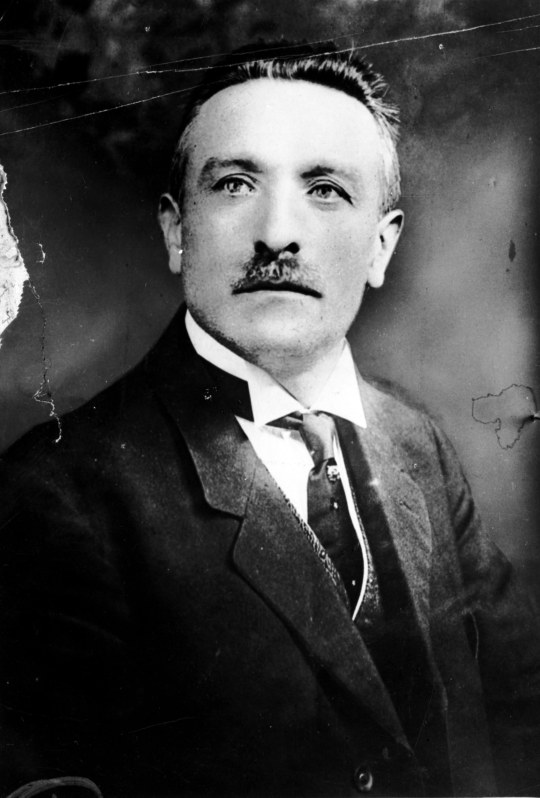

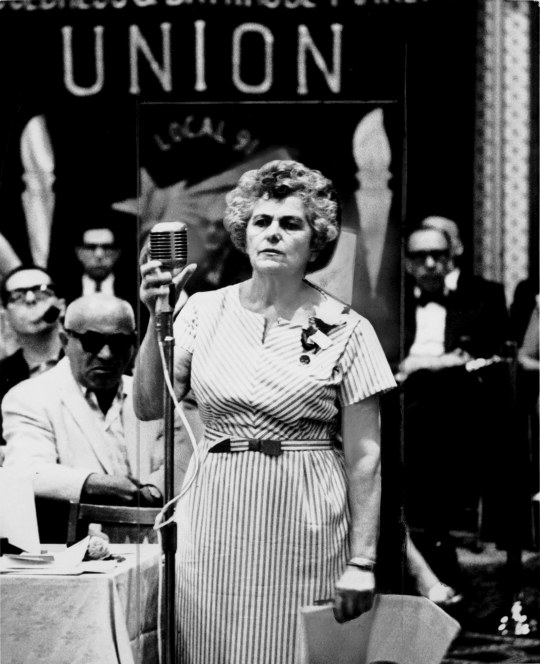

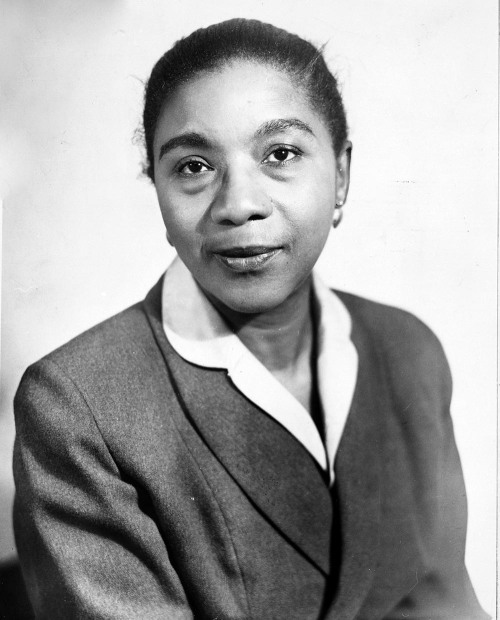
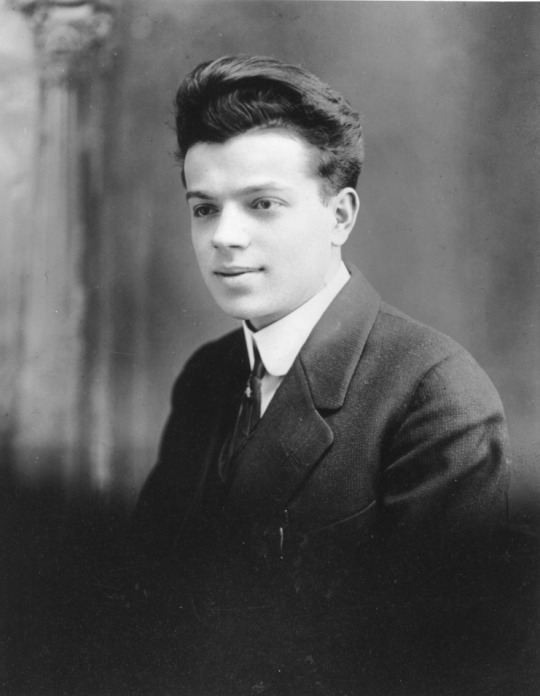

Pictured: Carola Woerishoffer, Frances Perkins, George Meany, Herman Grossman, Louis Stulberg, Rose Pesotta, Rose Schneiderman, Maida Springer Kemp, David Dubinsky, and Walter Reuther.
#Kheelcenter#Organizer#LaborOrganizerSpotlight#LaborOrganizer#ILR#CornellUniversity#LaborHistory#LaborArchives#2024#ILGWU#InternationalLadiesGarmentWorkersUnion#ArchivesOfTumblr#ILRSchool
2 notes
·
View notes
Text
this is not related but it is related to assassinations and i have to vent. in the post-irishman world the theory that walter reuther's plane was sabotaged (that his death was an assassination) has gained purchase with young laborists. it's just the most out of touch possible theory. it's literally--sorry--the labor equivalent of believing the american right is going to assassinate barack obama. meanwhile general baker claimed that he had intel that the 1968 (i believe) shooting of DRUM member fred holsey was a UAW hit on baker himself that went bad. 100% the uaw was doing yablonski level petty hits. "walter reuther was assassinated" theory most obvious op of all time
9 notes
·
View notes
Video
youtube
Paradise Exposed: A New View on Old Detroit
A large collection of photographs of old Detroit was recently donated to the Walter P. Reuther Library at Wayne State University. It’s believed the photos are from historic African-American neighborhoods like Black Bottom and Paradise Valley, but the names, dates, and exact locations are a mystery — for now. Discover more at http://s.mlive.com/mNBkPPe
2 notes
·
View notes
Photo


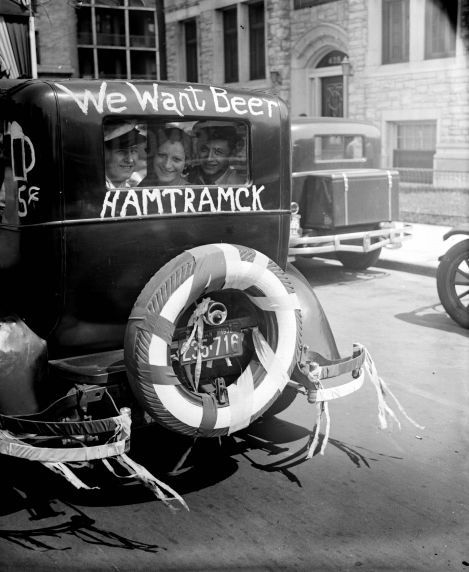

Detroit ‘Beer Parade,’ May 14, 1932.
1) Thousands of demonstrators demand an end to Prohibition as they march through the streets of downtown Detroit during the city's "Beer Parade." An estimated crowd of 40,000 attended the festive, day-long event, including Mayor Frank Murphy.
2) Women dressed in sailor suits march through the streets of downtown Detroit in support of the repeal of Prohibition during the city's "Beer Parade."
Their banner reads: "Bring Back Beer and we will give the Depression the ---."
3) Men and women ride in car decorated with crepe paper and the slogan "We Want Beer - Hamtramck" through the streets of downtown Detroit in support of the repeal of Prohibition during the city's "Beer Parade."
4) Men ride on a float through the streets of downtown Detroit in support of the repeal of Prohibition during the city's "Beer Parade."
These photos are from the Detroit News and put online by the Walter P. Reuther library at Wayne State University. All captions provided by the library archivists.
#detroit#beer parade#prohibition#anti-prohibition#alcohol prohibition#the great depression#political march#parade#united states history
5 notes
·
View notes
Photo

May 8, 1962 - President Kennedy (pictured with Walter Reuther) called on labor today to exercise restraint and responsibility in its bargaining demands. In a speech before the convention of the United Automobile Workers, the President made it clear that he expected labor as well as management to consider the general welfare and the public interest. He said that “no financial sleight of hand” could raise wages and profits faster than productivity without the threat of inflation. Unjustified wage demands, he said, can lead to recurring price and wage demands contrary to the national interest. “This Administration has not undertaken and will not undertake to fix prices and wages in this economy,” he said. The speech was delivered before a generally enthusiastic audience of 2,800 U.A.W. delegates and 8,000 visitors and friends. It was generally interpreted as the President’s answer to those who had wondered if he would talk as firmly to labor as he did to management after the steel price increase last month.
2 notes
·
View notes
Text
If It Looks Like A Duck…
…walks like a duck and quacks like a duck, then it just may be a duck. (Walter Reuther)

California's twenty-one regional centers perform the function of government agencies. Functionally they are branches of the State of California's Department of Developmental Services. The regional centers perform assessments to determine whether or not applicants are eligible to receive government funded services. They monitor how those services are implemented and they report their findings to the DDS, a government agency. However, these twenty-one regional centers are not government agencies; they are private, non-profit corporations under contract to the State of California. A distinction without a difference? Not quite. It seems that the twenty-one regional centers are also above the law.
As documented on this blog, it's a tough slog to hold regional centers accountable. I allege that the San Gabriel Pomona Regional Center) (SGPRC) has blatantly violated the Lanterman Act in their management of my son Cavan Argila's case and Cavan's subsequent conservatorship by the DDS. I believe that documents maintained by the SGPRC would show how tax payer funds were spent inappropriately, and possibly illegally, in terminating family provided services for Cavan and pursuing DDS conservatorship of Cavan. I can't obtain those documents using a California Freedom of Information Act request. Executive director Jesse Weller explains why in his April 2, 2024 letter to me (see https://documents.sgprc.net/2024-04-02%20FOIA%20Response.pdf).
This duck not only walks and quacks but it also stinks.
Carl Argila
www.SGPRC.net
0 notes
Photo
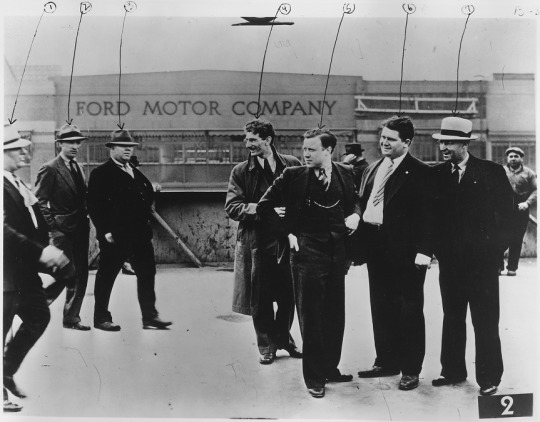
Walter Reuther, Richard Frankensteen, and other @UAW leaders stand outside the Ford Motor Company’s River Rouge Plant. On the left, Ford security forces are about to assault the union organizers, 5/26/1937.
Series: Franklin D. Roosevelt Library Public Domain Photographs, 1882 - 1962
Collection: Franklin D. Roosevelt Library Public Domain Photographs, 1882 - 1962
Image description: Three men, not smiling, walk toward a group of four men who have just finished posing for a photo. In the background there is a building with “FORD MOTOR COMPANY” on it.
#archivesgov#May 26#1937#1930s#unions#labor#united auto workers#ford motor company#detroit#battle of the overpass
55 notes
·
View notes
Text
Map: Detroit Edison Route Map of the City of Detroit 1980
This simple map of main roads and expressways served as a minimalist route map for the Detroit Edison Co., what would become DTE Energy. The most interesting element is the typed title of the source and publisher of the map “Generation Engineering, Cartography.” DTE had a cartography division into the 1980s and I wonder how much of a bridge that team was from the grandiose maps and plans of…

View On WordPress
#1980#cartography#Detroit#Detroit Atlas#Detroit Edison Company#DTE Energy#Generation Engineering#Hill Map Collection#map#Walter P. Reuther Library
0 notes
Text
Throwback Thursdays

Today I drew Dr. Martin Luther King Jr. And today I'm going to talk about Detroit walk to freedom.It happened in June 23rd in 1963 in Detroit, Michigan. It was a massive march during the Civil Rights Movement, there were 125,000 participants and spectators present, which made it the LARGEST Civil Rights demonstration in the nation's history prior to the March on Washington in Washington DC in August 1963. The March was organized by Rev. Clarence LaVaughn Franklin (He was the father of Aretha Franklin and Rev. Albert B. Cleage) Franklin and Cleage as well as other organizers for the Detroit Council for Human Rights have planned the march. Cleage wanted the march to be all Black and led by Black people only but National Association for the Advancement for Colored People basically were like 'Hey umm we're going to boycott the march if you didn't include white leaders into the march' so of course Cleage changed his mind. The March had 3 goals, to speak out against the segregation and the brutality they experienced regularly in the South, addressed concerns in the urban North that included employment and housing discrimination and de facto school segregation. The March was intended to raise funds and awareness for the Southern Christian Leadership Conference. Coincidentally at that day was also the 20th anniversary of the Detroit Race Riot. So the majority of the marchers were Black, but there were also white participants such as Michigan governor John Swainson, Detroit mayor Jerome Cavanagh,the president of the United Auto Workers, Walter Reuther and Billie S. Farnum. George Romney was unable to attend because he needed to attend the service of the Church of Latter Day Saints.The march started around 3 p.m. on both Woodward Avenue and Adelaide and it continued along Jefferson and it concluded at Cobo Arena and Hall, the song 'The Battle Hymn of the Republic' was sung during the march and people carried banners and signs. The march lasted about 90 minutes and was highlighted by a speech from you guessed it Dr. Martin Luther King Jr. which was 'I Have a Dream' . There were also other speakers included such as Charles Diggs, Cleage, Reuther and Swainson. And 20,000 people in 2013 celebrated the 50th anniversary of the march including Martin Luther King lll,Dave Bing,Jesse Jackson and Al Sharpton.
Source :
0 notes